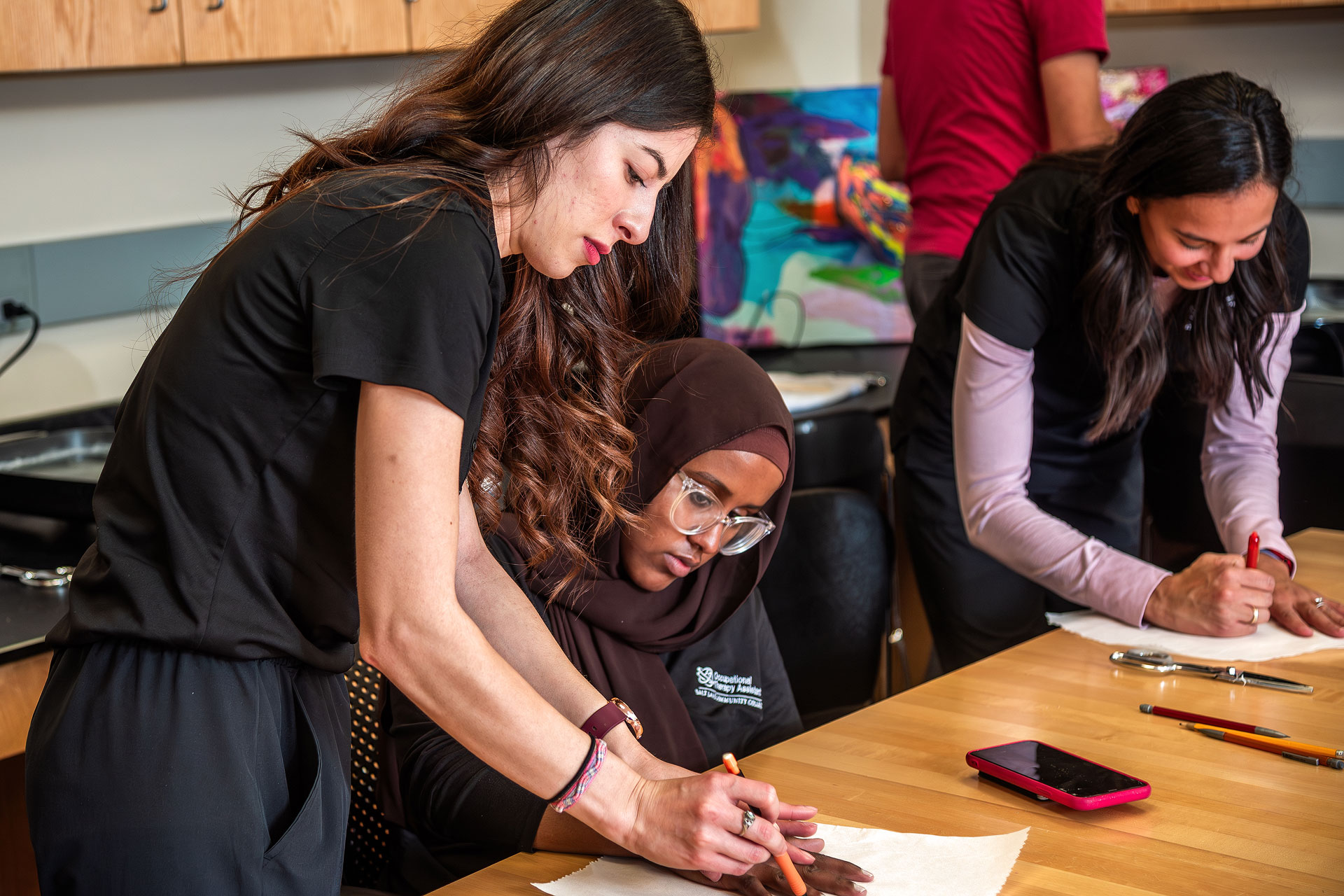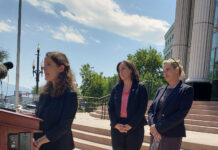
The personal approach taken by professors in the Occupational Therapy Assistant program at Salt Lake Community College is said to be a reflection of the actual occupational therapy career.
That’s what caused Gabe Byars, SLCC’s OTA program coordinator, to switch careers and make students his “patients.”
Ten years ago, Byars made an unplanned shift from full-time clinician to helping students coordinate their OT education. Now he has the best of both worlds: helping students one-to-one find creative ways to overcome challenges, while filling a societal need for more occupational therapists.
Byars said he came to love the creativity in occupational therapy while helping his father regain his ability to do daily tasks after a heart attack. He developed new morning processes based on his dad’s abilities and environment.
“We couldn’t exercise my dad to get him stronger,” he said. “We made adaptations to his process and environment to make it easier, like lifting the television remote over his head 10 times instead of weights.”
Byars also created new steps to get out of bed, take a shower, get dressed, and successfully complete other daily activities most people wouldn’t think twice about doing. This is what occupational therapists do.
“Occupational therapy is a much broader program requiring outside-the-box thinking,” Byars said. “There’s a lot of different ways to look at and solve a problem.”
The two-year program helps prepare students to help individuals of all ages who face a wide variety of disabilities that make daily life difficult.
“The demand is not slowing; it’s increasing,” said Cher Knupp, director of SLCC’s Health Sciences admissions, marketing and outreach. “You need people to match what the community is asking for.”
According to a USCIS guide article, the Department of Workforce Services projected an 8% increase in OT jobs over the next decade in Utah.
Every fall semester, the Occupational Therapy Assistant Program accepts a cohort of 24 students. Knupp said SLCC’s occupational therapy degree is appealing to students because they develop a close connection with the faculty and administrators due to the small size of the program.
“Students are cared for because we want them to be successful,” she said.
Byars commented on how he supports his students.
“If I notice one of my students having an off day, I suggest taking a walk with them and offering support so that they can get through their challenges,” Byars said.
The benefits to both patients and practitioners are just some of the reasons why the program is flourishing, Knupp explained.
“The healthcare administration and occupational therapists at SLCC will continue helping students prepare to meet community demands and, in turn, increase the standard of living for those with physical challenges,” she said.
Byars believes the program will continue to be successful and serve students and the community for years to come.







